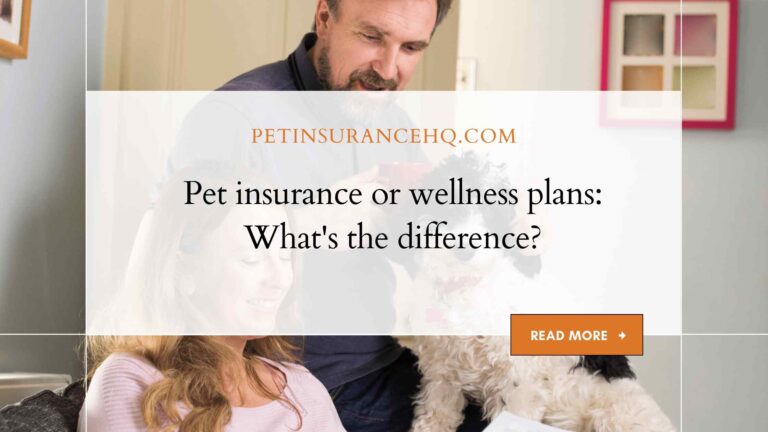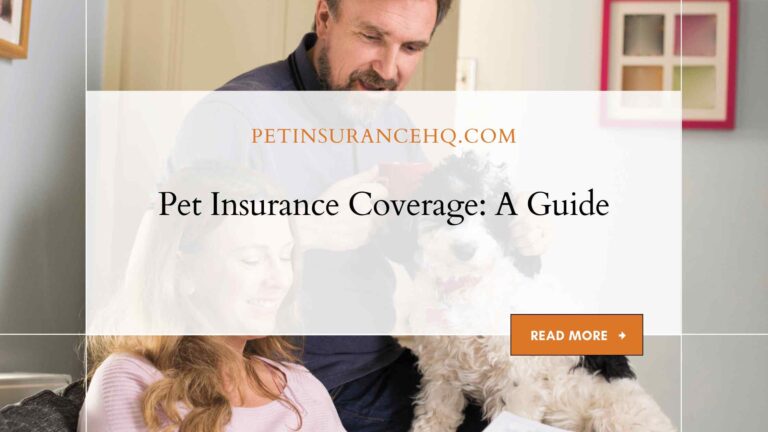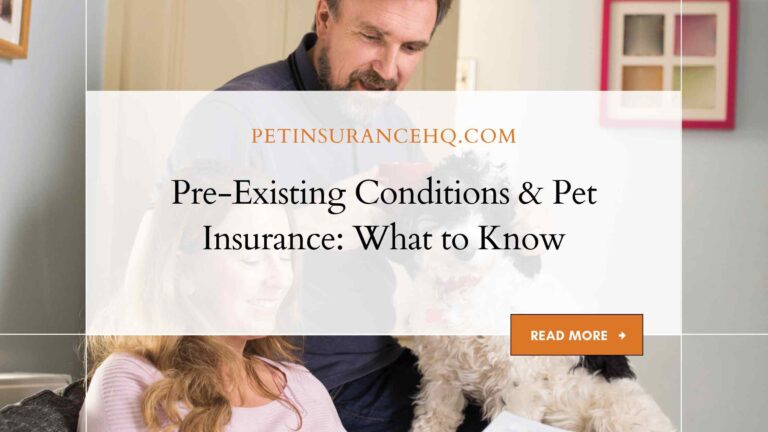Pet Insurance for Older Pets: What to Look for and What to Expect
As your furry companion ages, they may need more medical attention than ever before. From arthritis to dental problems, senior pets are prone to a wide range of health issues that require costly treatments and procedures. But don’t worry – pet insurance can help ease the financial burden of caring for an older pet.
In this blog post, we’ll guide you through everything you need to know about selecting the right pet insurance plan for your aging fur baby and what kind of coverage you can expect. So sit back, relax, and read on for some valuable insights into protecting both your wallet and your beloved companion’s health!
Understanding Pet Insurance
As your pet enters their senior years, you may begin to think about pet insurance. After all, older pets are more susceptible to health problems and accidents. But what exactly is pet insurance, and how does it work?
Pet insurance is a type of insurance that helps cover the cost of veterinary care for your pet. It can be used for everything from routine check-ups and vaccinations to emergency care and surgeries.
There are a few things to keep in mind when shopping for pet insurance for your older pet. First, make sure that the policy covers pre-existing conditions. Many policies will not cover conditions that your pet has already been diagnosed with, so this is an important consideration.
Secondly, consider the reimbursement level of the policy. This is the percentage of vet bills that the insurer will reimburse you for. A higher reimbursement level will give you more coverage but also likely come with a higher premium.
Think about whether you want a policy with a deductible or not. A deductible is the amount you have to pay out-of-pocket before your insurance coverage kicks in. Some people prefer policies with deductibles because they tend to be less expensive, but it’s important to make sure you can afford the deductible if you ever need to use your policy.
Understanding these different aspects of pet insurance can help you choose the right policy for your older pet. And while premiums may be higher than they were when your pet was younger, peace of mind is worth the cost.
Benefits of Pet Insurance for Older Pets

There are plenty of good reasons to get pet insurance for your older animal friends. Here are just a few of the benefits:
One of the biggest benefits is that you can avoid financial ruin in the event of an unexpected accident or serious illness. Older pets are more prone to both, and vet bills for even routine care can be expensive. With pet insurance, you can rest assured that you will be able to afford the care your pet needs, without having to make tough choices about their treatment.
Another big benefit is peace of mind. No one likes worrying about their pet, and with pet insurance you can relax a little bit knowing that if something does happen, you will be covered. This way, you can focus on enjoying your time with your furry friend, rather than constantly worrying about what could go wrong.
Many policies have no upper age limit for coverage. So even if your pet is starting to get up there in years, you can still insure them against accidents and illnesses. This way, you can enjoy their company for as long as possible without worrying about being financially prepared for anything that might happen down the road.
What to Look For in a Pet Insurance Policy
When it comes to pet insurance for older pets, there are a few key things you should look for in a policy. First, make sure that the policy covers all of the essential medical treatments and procedures that your pet may need as they age. This includes things like routine check-ups and vaccinations, as well as more extensive treatments like surgeries or cancer treatments.
Second, you’ll want to make sure that the pet insurance policy has no age limits or restrictions on coverage. Some policies will only cover pets up to a certain age or will exclude certain conditions that are common in older pets. Be sure to read the fine print of any policy you’re considering so that you know exactly what is and isn’t covered.
Consider the cost of the pet insurance policy. Older pets tend to require more medical care, so their policies will generally be more expensive than those for younger pets. However, it’s important to find a policy that fits your budget and provides the coverage your pet needs. There are many affordable options out there, so shop around and compare rates before making a decision.
Coverage Options
There are a few key things to look for when shopping for pet insurance for your older pet. First, make sure the policy covers chronic illnesses and conditions common in older pets. Many standard policies exclude coverage for these conditions, so it’s important to read the fine print carefully. Secondly, look for a policy with no upper age limit. Some insurers will only cover pets up to a certain age, typically around 8 or 10 years old. Third, consider a policy with no waiting period. Some insurers require you to wait 6 months or even a year before coverage kicks in, which isn’t ideal if your pet is already dealing with health issues. Make sure the premium is affordable and that you’re not paying for more coverage than you need. Older pets typically have fewer medical needs than younger ones, so you may be able to get by with a less comprehensive policy.
Cost Considerations
As your pet ages, the likelihood of them experiencing health problems increases. This means that you could potentially face expensive vet bills for your older pet. Pet insurance can help to cover these costs, but it is important to be aware of the different policy options available and what to expect from each one.
The most basic level of pet insurance will usually cover emergency treatment and hospitalization. However, this may not be enough to cover all the costs associated with your older pet’s care. You may need to consider a policy that provides more comprehensive coverage, such as those that cover chronic conditions or routine care. These policies will generally cost more than basic ones, but they could end up saving you money in the long run.
It is also important to keep in mind that most pet insurance policies have age limits, so you may not be able to get coverage for your older pet if they are already considered a ‘senior’. Be sure to check the policy terms and conditions before you purchase to make sure that your pet will be covered.
Pros and Cons of Pet Insurance for Older Pets
As your pet ages, you may start to think about pet insurance. After all, older pets are more likely to need medical care, and that can be expensive. But is pet insurance for older pets worth it? Here are some things to consider:
Pros:
- You can customize your coverage. For example, you can choose to insure only certain types of medical procedures or illnesses.
- Pre-existing conditions are generally covered.
- You can get reimbursed for some or all of your veterinary bills.
Cons:
- Pet insurance is not cheap. You will have to pay monthly premiums, as well as deductibles and co-pays.
- Not all veterinary procedures and medications are covered. There may be exclusions in the fine print that you’re not aware of.
- Claims can be denied for any number of reasons. If your claim is denied, you’ll have to pay the entire bill yourself.
Alternatives to Pet Insurance
There are a few alternatives to pet insurance for older pets. One is to self-insure, which means setting aside money each month to cover potential veterinary costs. Another option is to purchase a pet health care plan from a company like VPI. These plans typically have an annual deductible and co-payments for services, but can provide some peace of mind knowing you have some financial protection in place. Many credit cards offer extended warranty coverage on purchases made with the card, so if you put your pet’s medical expenses on your credit card, you may be covered for an additional year or two beyond the standard manufacturer’s warranty.
Conclusion
Even though pet insurance for older pets is more extensive than basic plans, the extra coverage can be invaluable to help pay off unexpected illnesses and conditions. While researching and choosing the right policy for your aging fur baby, make sure to look at what’s covered in addition to relying on customer feedback and reviews of different pet insurers. Decide whether you want a comprehensive plan that covers routine preventative care or just an emergency care plan. Weigh up the pros and cons with each insurer so that you understand everything relating to deductibles, exclusions, waiting periods, ongoing requirements etc before settling into one provider – like picking out the perfect sweater for your four-legged companion!






